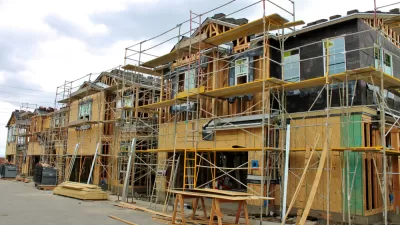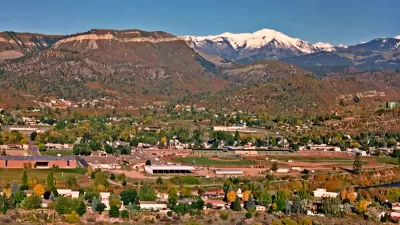As wildfires grow more destructive, how far should states go to protect homes located in high-risk areas?

"The California Department of Insurance last month released new regulations that require insurance companies to reward homeowners who take steps to protect their home from wildfire, such as clearing brush and trees from the immediate vicinity of their home or putting on a fire-resistant roof." But as wildfires become more frequent and destructive, writes Emma Marris, "to what extent should we cushion the blow of these dangers, and is there a limit to how much, or how long, we pay?"
Insurers are scrambling to figure out their strategy for the future as more destructive fires wipe out their earnings. "Insurance companies are prohibited by state law from using models of future conditions to set their rates, but with the fires of the past five or so years, even backwards-looking risk calculations are beginning to prompt insurers to raise rates or refuse to renew policies."
"In 32 states, rejected homeowners can always get coverage through programs known as FAIR plans—insurance pools run collectively by every company offering homeowner’s insurance in the state." Critics of FAIR plans say "These policies send an unrealistic message to homeowners about how much risk they are taking on."
But raising FAIR premiums could have a negative impact on low-income households, notes Marris. "If people are exposing themselves to risk simply because they want to, using insurance policy to make it expensive or impossible to do so sounds like a great idea. But when people are moving to risky areas out of necessity, the same policies could instead seem cruel."
Experts urge community-level, "collective hardening actions—cleaning up fuels that encircle whole neighborhoods, sending a free truck around to remove woody debris from yards, ensuring enough water is available for firefighters when they crack open a hydrant."
FULL STORY: People Deserve to Know Their Houses Are Going to Burn

Maui's Vacation Rental Debate Turns Ugly
Verbal attacks, misinformation campaigns and fistfights plague a high-stakes debate to convert thousands of vacation rentals into long-term housing.

Planetizen Federal Action Tracker
A weekly monitor of how Trump’s orders and actions are impacting planners and planning in America.

In Urban Planning, AI Prompting Could be the New Design Thinking
Creativity has long been key to great urban design. What if we see AI as our new creative partner?

King County Supportive Housing Program Offers Hope for Unhoused Residents
The county is taking a ‘Housing First’ approach that prioritizes getting people into housing, then offering wraparound supportive services.

Researchers Use AI to Get Clearer Picture of US Housing
Analysts are using artificial intelligence to supercharge their research by allowing them to comb through data faster. Though these AI tools can be error prone, they save time and housing researchers are optimistic about the future.

Making Shared Micromobility More Inclusive
Cities and shared mobility system operators can do more to include people with disabilities in planning and operations, per a new report.
Urban Design for Planners 1: Software Tools
This six-course series explores essential urban design concepts using open source software and equips planners with the tools they need to participate fully in the urban design process.
Planning for Universal Design
Learn the tools for implementing Universal Design in planning regulations.
planning NEXT
Appalachian Highlands Housing Partners
Mpact (founded as Rail~Volution)
City of Camden Redevelopment Agency
City of Astoria
City of Portland
City of Laramie





























